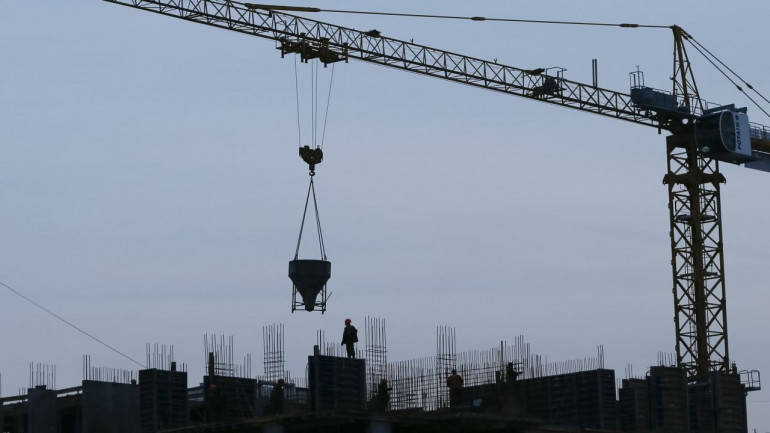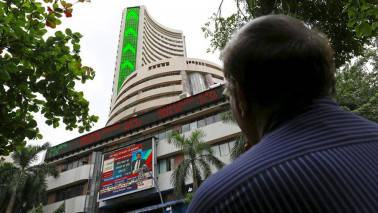ICRA expects the interim budget to increase capital outlay towards infrastructure sector by 12-18 percent with a major part of it going towards roads and railways
Abhishek Gupta
The Indian construction sector has witnessed healthy order inflows over the past few years supported by increased pace of infrastructure project awards, particularly from the transportation and urban infrastructure segment.
Multiple reform measures in the infrastructure sector have also supported improvement in the pace of project execution.
The union budget for 2019-20 to be presented on February 01, 2019, being an interim budget, is not expected to make any major policy change related to the sector.
However, ICRA expects the focus to continue on infrastructure which will support construction sector.
As the construction sector in India derives majority of its orders from the infrastructure projects, the increased outlay towards key infrastructure sectors like roads, railways, urban infrastructure etc., in the past has boosted the order book of construction companies most of which have order book adequate to provide revenue visibility for at least 2-3 years.
The last Union Budget (Budget 2018-19) had increased the capital outlay for infrastructure sector by 20.8 percent to Rs 5.97 lakh crore.
ICRA expects, the interim budget to increase the capital outlay towards infrastructure sector by 12-18 percent. A major part of this capital outlay is expected to be budgeted towards roads and railways.
Dedicated allocations for specified large infrastructure projects announced such as Bullet trains, Bharatamala, Sagarmala, Smart Cities, Inland Waterways development, etc. is also likely to be made to expedite these projects. While the pipeline of projects to be awarded in these sectors remains strong, an increase in budgeted capital outlay will enhance visibility of conversion of the projects planned.
ICRA also expects the budgetary allocation towards NHAI to be increased keeping in view the increased capital outlay on national highway development viz Bharatamala.
While the expenditure on national highway development has increased significantly over the last 3-4 years, a major part of it has been funded by Internal and Extra Budgetary Resources (IEBR). An increased budgetary allocation will lower the dependence on IEBR and can support faster pace of highway development.
Apart from the core railways, and roads, the special focus of this budget is expected on the development of rural infrastructure like rural roads, rural houses, sanitation, irrigation and water supply, etc. To meet the government’s target of housing for all by 2022, the budget is expected to announce an increase in PMAY (Rural) outlay for supporting construction of houses in rural areas.
Similarly, capital outlay under PMAY (Urban) which includes assistance for constructing homes in urban areas is also expected to be increased. The allocation towards PMKSY-AIBP (Pradhan Mantri Krishi Sinchayee Yojana - Accelerated Irrigation Benefit Programme) which supports priority irrigation projects is also expected to be increased.
The budget is also expected to provide direction on the long-term projects being undertaken under Smart Cities Mission, and Atal Mission for Rejuvenation and Urban Transformation (AMRUT) programme.
So far, out of 100 cities planned for upgradation under Smart Cities Mission, 99 cities have been selected. The programme will involve capital outlay of Rs. 2.04 lakh crore. Similarly, under AMRUT programme, State level plans for providing water supply in 500 cities with capex of Rs 0.78 lakh crore have been approved.
For faster and efficient infrastructure development, partnership with private sector is essential. However, private sector participation in infrastructure has dwindled and remained concentrated on few sectors like Roads, Ports, etc.
Issues like lengthy dispute resolution, stuck claims, delays and cost-overuns etc have impacted sentiments for private sector investment.
Availability of long-term debt-funding has also been a challenge faced by the sector. Deepening of bond markets is required to support long-term infrastructure financing especially given the twin challenges faced by commercial banks - asset-liability management and increasing share of stressed assets.
The private sector expects further steps to ease long-term funding availability for the infrastructure sector, as well measures to strengthen the corporate bond market. However, given that its an interim budget, no major policy measures are expected this time.
Abhishek Gupta, Assistant Vice President – Corporate Ratings, ICRA














